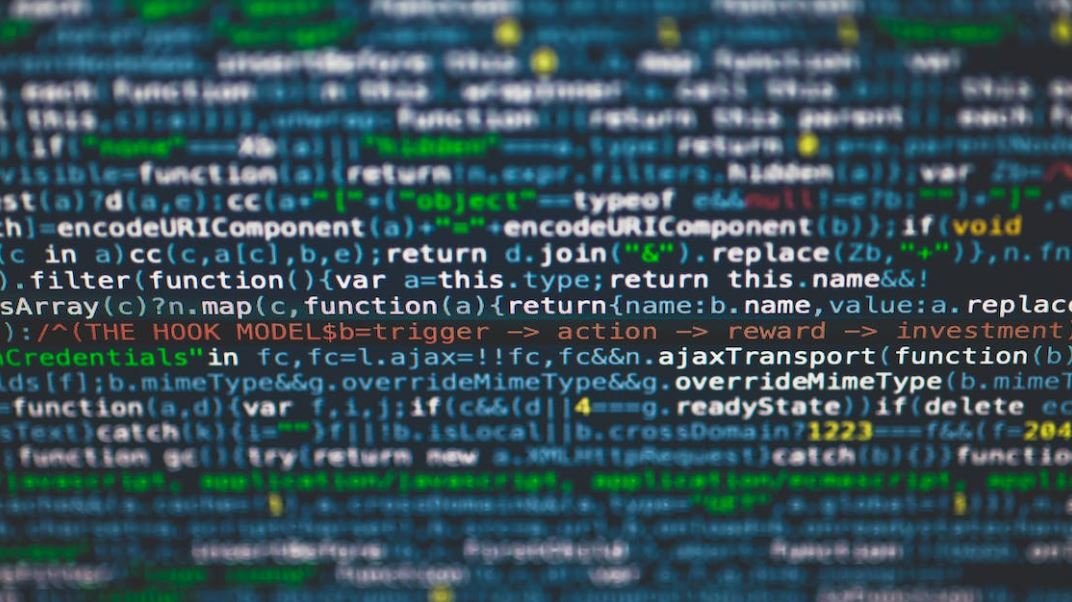GPT Partition Table
The GPT (GUID Partition Table) is a partitioning scheme used in modern computer systems. It is an improvement over the traditional MBR (Master Boot Record) partitioning scheme, offering several advantages in terms of capacity, reliability, and compatibility.
Key Takeaways
- GPT is a partitioning scheme used in modern computer systems.
- GPT offers advantages in terms of capacity, reliability, and compatibility.
- It supports larger disk sizes than MBR.
- GPT provides redundancy for critical partitioning data.
- It is compatible with both BIOS and UEFI.
Traditional partitioning schemes like MBR have limitations in terms of the maximum disk size they can support, which is 2 terabytes (2^32 logical blocks). GPT overcomes this limitation and provides support for much larger disk sizes, up to 8 zettabytes (2^64 logical blocks) in theory, although current implementations support up to 9.4 zettabytes. This is particularly important for today’s high-capacity storage devices.
GPT allows for more efficient use of available disk space. Unlike MBR, which uses a fixed size to store the partition table, GPT stores partition entries at the beginning and end of the disk, as well as within the free space between partitions. This allows for more flexible partitioning and minimizes wasted space on the disk.
GPT Partition Structure
GPT divides the disk into several parts, each serving a specific purpose. These parts include:
- Protective MBR: The Protective MBR is a safeguard for older systems still using MBR. It reserves a small part of the disk to prevent MBR-unaware utilities from modifying GPT partitions inadvertently.
- GPT Header: The GPT Header is located at the beginning of the disk. It contains essential information such as the disk’s unique GUID and the location of the partition array.
- Partition Entries: The Partition Entries are an array of data structures that describe each partition on the disk. They specify the start and end LBA (Logical Block Address) of each partition, the partition type, and other attributes.
- Partition Array: The Partition Array is a list of partition entries. It contains a copy of each entry from the Partition Entries section and serves as a redundancy measure to ensure data integrity.
- Unused Space: This portion of the disk is left unused, allowing for future expansion or adding new partitions.
GPT and Compatibility
GPT is compatible with both traditional BIOS and the newer UEFI, making it suitable for a wide range of systems. When using UEFI, the system can boot directly from a GPT disk, which provides faster startup and improved system security. Older systems with BIOS are also supported by GPT, although they require a separate boot partition to overcome the BIOS limitations.
Advantages of GPT
GPT offers several advantages over traditional MBR partitioning schemes:
- More partitions: GPT supports up to 128 partitions, while the MBR scheme is limited to only 4 primary partitions.
- Data redundancy: The inclusion of the Partition Array in GPT provides redundancy for critical partitioning data, minimizing the risk of data loss in case of disk errors.
- Improved recovery: GPT stores backup copies of the partition table at the beginning and end of the disk. This redundancy makes recovery from disk corruption or failure easier and more successful.
Overall, GPT offers a reliable and scalable partitioning scheme with support for larger disk sizes, improved data integrity, and compatibility with both BIOS and UEFI systems.

Common Misconceptions
GPT Partition Table: A deeper look into common misconceptions
Misconception 1: GPT can only be used with UEFI systems
One of the most prevalent misconceptions about the GPT partition table is that it can only be used with systems that support UEFI (Unified Extensible Firmware Interface). However, this is not entirely accurate. While GPT is indeed the default partitioning scheme for UEFI-based systems, it can also be used with BIOS-based systems through a process called Compatibility Support Module (CSM) that emulates a UEFI environment.
- GPT can be used with both UEFI and BIOS systems
- BIOS-based systems require a CSM to use GPT
- GPT offers advantages over MBR even for BIOS systems, such as support for larger partition sizes
Misconception 2: GPT is limited to 4 primary partitions
Contrary to popular belief, the GPT partition table does not have a strict limit of four primary partitions like the MBR (Master Boot Record) partitioning scheme. GPT allows for the creation of up to 128 partitions, with no distinction between primary and extended partitions. This provides much more flexibility when organizing and managing disk space.
- GPT supports up to 128 partitions
- Primary and extended partitions do not exist in GPT
- GPT allows for more advanced partition management and organization
Misconception 3: GPT is not compatible with older operating systems
Some people believe that GPT is not compatible with older operating systems and can only be used with newer versions like Windows 10 or macOS. However, GPT is compatible with a wide range of operating systems, including older ones. While it’s true that some older operating systems may require additional drivers or specific configurations to recognize and use GPT disks, support for GPT has been around for quite some time.
- GPT is compatible with various operating systems, including older ones
- Some older operating systems may require additional drivers or specific configurations
- Support for GPT has been available for several years
Misconception 4: GPT offers no significant advantages over MBR
There is a common misconception that GPT does not provide any substantial benefits over the traditional MBR partitioning scheme. However, GPT offers several advantages, such as improved data redundancy through backup partition tables, support for larger disk sizes (>2TB), and enhanced error detection and correction using modern checksum algorithms. These advantages make GPT a preferable choice for many users, especially those dealing with larger disks or systems that require higher reliability.
- GPT provides improved data redundancy through backup partition tables
- GPT supports larger disk sizes (>2TB)
- GPT utilizes modern checksum algorithms for enhanced error detection and correction
Misconception 5: Converting from MBR to GPT will cause data loss
Some individuals may fear that converting their disk from MBR to GPT will result in data loss. While it is always important to back up your data before any major disk operation, the process of converting from MBR to GPT can be performed without data loss. Most modern disk partitioning tools, such as those provided by the operating system or third-party software, allow a conversion to GPT without formatting or erasing existing partitions, preserving the data stored on the disk.
- Converting from MBR to GPT can be done without data loss
- Always back up data before performing any disk operations
- Modern partitioning tools support non-destructive conversion to GPT

GPT Partition Table: The Evolution of Disk Partitioning
Over the years, disk partitioning has undergone various changes and improvements, from the traditional MBR (Master Boot Record) partitioning scheme to the more advanced GPT (GUID Partition Table). This article explores the key elements and features of the GPT partition table, highlighting its advantages and the benefits it offers to modern computer systems.
Table 1: GPT Partition Table vs. MBR Partition Table
| Features | GPT Partition Table | MBR Partition Table |
|---|---|---|
| Maximum Partition Size | 9.4 Zettabytes | 2 Terabytes |
| Number of Partitions | 128 partitions | 4 partitions |
| Backup Partition Table | Located at the end of disk | Only one copy at the beginning of disk |
| Boot Process | UEFI compatible | Bios (legacy) compatible |
The GPT Partition Table enables significantly larger partition sizes, allowing for better storage utilization. Additionally, while the MBR partition table supports a maximum of 4 partitions, GPT allows up to 128 partitions, offering greater flexibility for managing storage on modern systems. Furthermore, GPT provides a redundant backup partition table at the end of the disk, ensuring data integrity and improved fault tolerance.
Table 2: Partition Type GUIDs
| Partition Type | GUID |
|---|---|
| EFI System Partition | C12A7328-F81F-11D2-BA4B-00A0C93EC93B |
| Windows Reserved Partition | DE94BBA4-06D1-4D40-A16A-BFD50179D6AC |
| Microsoft Basic Data Partition | EBD0A0A2-B9E5-4433-87C0-68B6B72699C7 |
| Linux Filesystem Data Partition | 0FC63DAF-8483-4772-8E79-3D69D8477DE4 |
GPT Partition Table utilizes a variety of partition type GUIDs to categorize and identify different types of partitions. These unique identifiers allow operating systems to recognize and handle partitions accordingly. For example, the EFI System Partition (ESP) has a specific GUID (C12A7328-F81F-11D2-BA4B-00A0C93EC93B) that distinguishes it from other partitions.
Table 3: Partition Entry Structure
| Field | Size (bytes) | Description |
|---|---|---|
| Type GUID | 16 | Unique identifier for partition type |
| Partition GUID | 16 | Unique identifier for the partition |
| Starting LBA | 8 | The first logical block address (LBA) of the partition |
| Ending LBA | 8 | The last LBA of the partition (inclusive) |
The GPT partition entry structure contains essential information about each partition on the disk, such as its type GUID, partition GUID, and the starting and ending logical block addresses. This structure facilitates easy identification and access to partitions by the operating system, enabling efficient management and organization of data within the disk.
Table 4: Protective MBR
| Field | Size (bytes) | Description |
|---|---|---|
| MBR Signature | 2 | Indicates a protective MBR |
| Reserved Area | 418 | Not used, filled with zeros |
| GPT Header | 16 | Starting LBA and size of GPT header |
The GPT partitioning scheme incorporates a protective MBR to ensure compatibility with older systems that may not recognize GPT. The protective MBR contains a unique signature, a reserved area with all zeros, and information about the GPT header‘s location. This protective mechanism prevents older systems from inadvertently modifying or corrupting the GPT partition table.
Table 5: GPT Header
| Field | Size (bytes) | Description |
|---|---|---|
| Signature | 8 | Identifies the GPT header |
| Revision | 4 | Version of the GPT specification |
| Header Size | 4 | Size of the GPT header |
| Partition Entry Array Offset | 8 | Starting LBA of the GUID partition entry array |
The GPT Header serves as a vital component of GPT partitioning. It contains essential information about the GPT, including a signature to identify it, the specification revision used, the size of the header, and the offset location of the partition entry array. This header assists the system in understanding and interpreting the GPT partition table’s structure.
Table 6: GPT Partition Entry Array
| Field | Size (bytes) | Description |
|---|---|---|
| Partition Type | 16 | Unique identifier for partition type |
| Partition GUID | 16 | Unique identifier for the partition |
| Starting LBA | 8 | The first logical block address (LBA) of the partition |
| Ending LBA | 8 | The last LBA of the partition (inclusive) |
The GPT partition entry array contains multiple entries, each detailing critical information about a specific partition, such as the partition type, unique GUID, starting LBA, and ending LBA. This array enables the system to locate and access specific partitions, ensuring efficient disk management and data retrieval.
Table 7: Protective MBR Partition Types
| Partition Type | Value | Description |
|---|---|---|
| Protective MBR | EE | Identifies the disk as GPT partitioned |
| Unused Entry | 00 | Indicates an unused partition entry |
To protect the GPT partition table and disk from unintended modifications by older systems, the protective MBR defines specific partition types. The partition type “EE” denotes a protective MBR that signifies the disk employs GPT partitioning. Additionally, an unused entry (partition type “00”) marks any unallocated or unused partition entries within the MBR.
Table 8: BIOS Boot Partition
| Use Case | Partition Type | Size |
|---|---|---|
| GRUB (Bootloader) | EF02 | 1-2 MiB |
| CoreOS (Container Linux) | EF00 | 9 MiB |
In certain scenarios where UEFI is not available, a specialized BIOS Boot Partition is utilized to store boot-related data. Different use cases may require specific partition types and sizes. For instance, the GRUB bootloader typically uses a partition with the type “EF02,” ranging between 1 and 2 MiB in size. On the other hand, CoreOS (Container Linux) utilizes a larger partition, designated as “EF00,” with a size of 9 MiB.
Table 9: Windows-Only Partition Types
| Partition Type | Value | Description |
|---|---|---|
| Microsoft Reserved Partition | DE94BBA4-06D1-4D40-A16A-BFD50179D6AC | Reserved partition for Windows |
| Windows Recovery Environment | DE94BBA4-06D1-4D40-A16A-BFD50179D6AC | Partition containing Windows recovery tools |
Windows operating systems employ specific partition types for various purposes. The Microsoft Reserved Partition (type “DE94BBA4-06D1-4D40-A16A-BFD50179D6AC”) serves as a reserved partition for Windows, while the Windows Recovery Environment partition (type “DE94BBA4-06D1-4D40-A16A-BFD50179D6AC”) contains recovery tools necessary for system restoration and troubleshooting.
Conclusion
The GPT partition table revolutionizes disk partitioning by enabling larger partition sizes, supporting more partitions, providing redundancy, and accommodating advanced features such as UEFI booting. Its utilization of GUIDs to uniquely identify partitions, the protective MBR mechanism, and well-defined header and entry structures all contribute to an efficient and robust disk management system. As computers continue to evolve, the GPT partition table ensures the effective utilization and organization of storage resources, enhancing performance and reliability in modern computing environments.
Frequently Asked Questions
What is a GPT partition table?
A GPT (GUID Partition Table) is a partitioning scheme commonly used on modern computer systems. It replaces the older MBR (Master Boot Record) partitioning scheme and supports larger disk sizes and a greater number of partitions.
How does a GPT partition table differ from an MBR?
A GPT partition table has several advantages over an MBR. It supports disk sizes larger than 2TB, allows for more than four primary partitions, provides redundancy with a backup partition table, and uses unique partition identifiers (GUIDs) instead of hardcoded numbers.
How do I create a GPT partition table?
You can create a GPT partition table using various disk partitioning tools, such as Disk Management in Windows, Disk Utility in macOS, or the parted command in Linux. These tools allow you to initialize the disk as GPT and create partitions accordingly.
Can I convert an existing MBR partition table to GPT?
Yes, you can convert an MBR partition table to GPT without losing data. However, this process is not straightforward and may require third-party software or manual partitioning. It is crucial to back up your data before attempting the conversion.
Are there any limitations or compatibility issues with GPT?
GPT is generally compatible with modern operating systems, including Windows, macOS, and Linux. However, older systems with legacy BIOS may not support booting from GPT disks. In such cases, you may need to enable UEFI (Unified Extensible Firmware Interface) mode and install an operating system that supports it.
How many partitions can a GPT disk have?
A GPT disk can have a maximum of 128 partitions. However, the practical number of partitions may vary depending on the operating system and disk size.
Can I dual-boot with GPT partitioned disks?
Yes, you can dual-boot with GPT partitions. Most operating systems that support GPT can be installed on separate partitions and configured for dual-booting. However, the specific steps may vary depending on the operating systems involved.
How do I resize or delete partitions in a GPT partition table?
To resize or delete partitions in a GPT partition table, you can use disk management tools like Disk Management in Windows, Disk Utility in macOS, or the parted command in Linux. These tools allow you to modify partitions without affecting the overall disk structure.
What are protective MBRs in GPT?
A protective MBR (Master Boot Record) is a special partition on a GPT disk that helps protect the GPT partition table from being overwritten by MBR-unaware tools. It ensures compatibility with systems that do not recognize GPT and serves as a fallback option.
Can I convert a GPT disk back to MBR?
Yes, it is possible to convert a GPT disk back to MBR, but it generally requires deleting all partitions and then converting the disk. This process will result in data loss, so it is vital to back up any important data before attempting the conversion.




